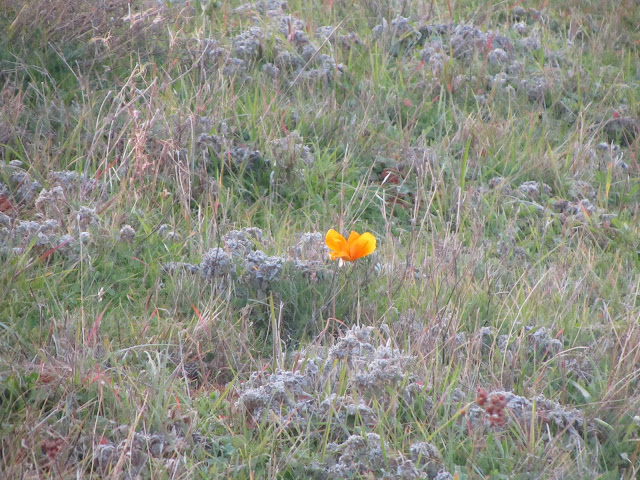Wednesday, December 14, 2011
Tuesday, June 7, 2011
Sunday, June 5, 2011
Friday, May 20, 2011
Friday, April 22, 2011
Thursday, January 6, 2011
Buckeye Fruit
This year California Buckeye gained their leaves in May, bloomed in June, shed in August, and were bare by late September as the fruit began to form.
For the very first time, I see squirrels taking the fruit.
I was under the impression that nothing ate buckeyes -- not deer, not squirrel, not Indians, not nothing...
Here's a squirrel-nibbled buckeye...
The kids and I were standing in the woods last week when buckeye pieces began raining down on our heads; a squirrel had taken one to the top of a pine.
But the point of this story is that they're sprouting in December!
dropping the husk...
millions underfoot, all sprouting in synchrony this last week of December.
The fruits are the size of golf balls and they litter the ground at the foot of each buckeye tree. If the terrain isn't sharply sloped they remain in place, germinate, and then in the Spring -- when mother buckeye regains her dense foliage -- they wither and die from lack of direct sun.
I'm speaking generally, but.. only buckeye fruit that roll away, downhill, from the mother tree have a chance of survival. Weighty and shaped like a ball, they are perfectly suited for rolling long distances on the bare ground of the California foothills in winter.
So, what of that buckeye tree that stand perched on the top of a hill?
How did the hard, round, heavy fruit ever get up there?
:-)))
For the very first time, I see squirrels taking the fruit.
I was under the impression that nothing ate buckeyes -- not deer, not squirrel, not Indians, not nothing...
Here's a squirrel-nibbled buckeye...
The kids and I were standing in the woods last week when buckeye pieces began raining down on our heads; a squirrel had taken one to the top of a pine.
But the point of this story is that they're sprouting in December!
dropping the husk...
millions underfoot, all sprouting in synchrony this last week of December.
The fruits are the size of golf balls and they litter the ground at the foot of each buckeye tree. If the terrain isn't sharply sloped they remain in place, germinate, and then in the Spring -- when mother buckeye regains her dense foliage -- they wither and die from lack of direct sun.
I'm speaking generally, but.. only buckeye fruit that roll away, downhill, from the mother tree have a chance of survival. Weighty and shaped like a ball, they are perfectly suited for rolling long distances on the bare ground of the California foothills in winter.
So, what of that buckeye tree that stand perched on the top of a hill?
How did the hard, round, heavy fruit ever get up there?
:-)))
Subscribe to:
Posts (Atom)









